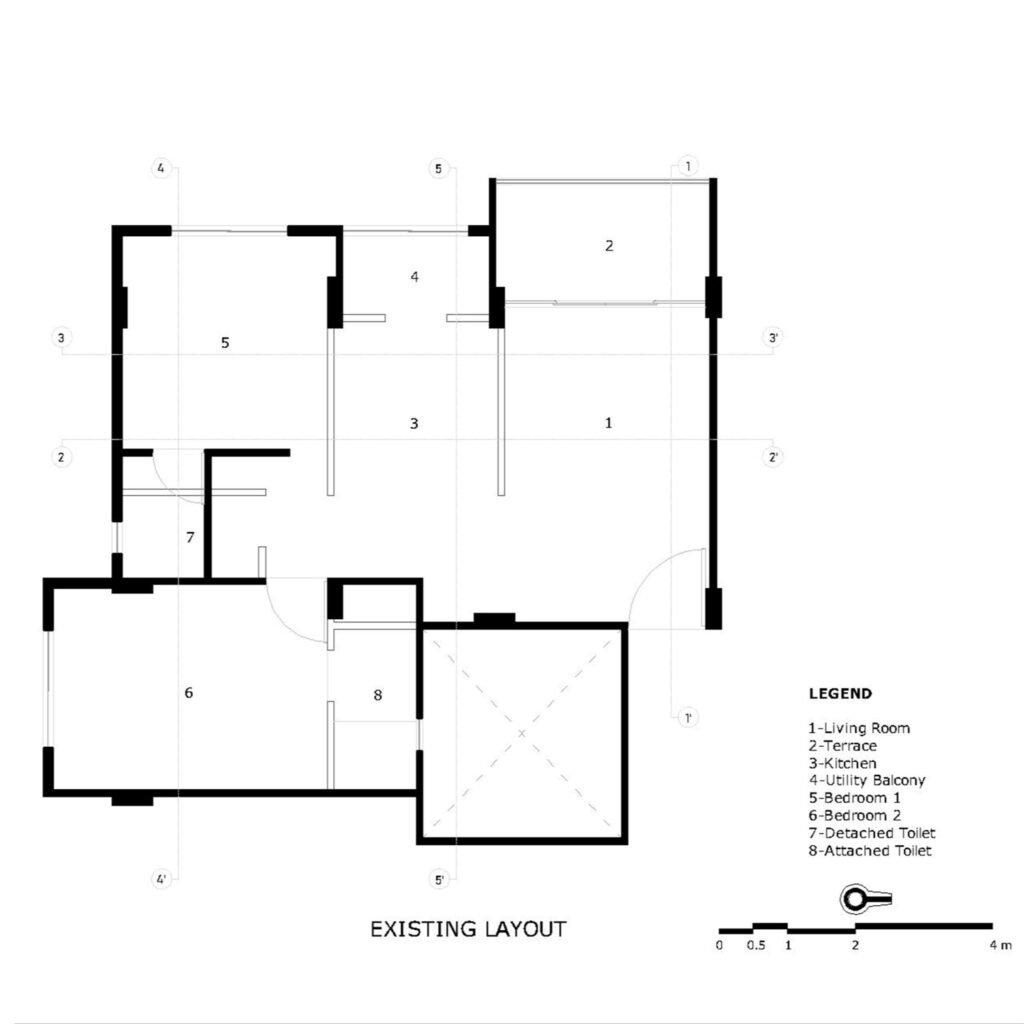
The Cave Laboratory for Research, Architecture, & Planning is located at the foothills of Pandav Leni, where 2nd century BCE Buddhist caves exist on the historic trade route (today’s Mumbai-Agra national highway), from where Roman traders traded goods with mainland India via the western coast. With this significance at the background, a residential apartment in a newly emerging neighbourhood was bought with a direct view of both the caves as well as the highway.
The two-bedroom apartment was converted to a studio space with an attached resting space for the architect. Owing to the small area of the apartment, an open plan was preferred by knocking down the internal walls separating the living, kitchen, and bedroom of the existing layout. Open plan, paired with light and loose furniture, provided flexibility for the studio to expand, accommodating more people for any public events and presentations.




Similarly, in the private space, the single bed can be used as a dining room for 7, and the long seating benches double as sleeping platforms too. All furniture, except the printing desk, reading bench, and entrance bench, is designed for on-floor seating. The work desk height is pegged to 400 mm, i.e., the usual seating height, ensuring that the tables and desks may be used as seating when required. On-floor seating has been traditionally preferred in the East as it acknowledges the force of gravity, anchors the body to the ground, assisting in minimizing the physical movement and, in turn, aiding more rigorous creative activity to emerge.





Open, skeletal shelves ensure that the small space does not look even smaller. The open book shelf (which doubles as a model exhibit shelf) hides the pantry behind. Pantry is sandwiched between the studio and the personal space of the architect, acting as a transition between the common and the intimate. The punctures in the book shelf ensure that the pantry is naturally lit and one is not entirely disconnected from the studio.






The material palette is kept minimal, mostly natural—mud, wood, stone, and cement. Wax-polished black kadappa stone flooring adds depth and warmth, serving as a neutral ground for softer and warmer rubberwood furniture. The walls are plastered in two different shades and materials, visually dividing the volume in two zones. Waxed & polished IPS (Indian Patent Stone) is applied in the working zone up to a height of 1200 mm owing to its better durability, while the rest of the wall above is mud plastered using red soil procured from a local nursery. Shades of green, used for oil painted doors and green marble for the pantry and toilet, contrast and complement with an otherwise warm colour palette. The structural offsets of columns and beams were deliberately retained to accentuate the shade and tonal variation of the mud plaster and IPS. Instead of using darkness-dispelling hung profile lights, hanging dome lights were preferred that create an alternating rhythm of light and dark, reminiscent of the atmosphere found in traditional local architecture.


As Christian Norberg-Schulz mentions about the atmosphere in Prague, “The illumination is not continuous and even; strongly lit and dark zones alternate, and make us remember the times when a street lamp created a place.”
Source: Genius Loci- Towards a Phenomenology of Architecture, p. 83


Project Drawings:









Project Details:
Name: The Cave Laboratory for Research, Architecture, & Planning
Location: Nasik City, Maharashtra, India
Status: Built (2024)
Built Area: 65 sq. m.
Typology: Office Interior (Architecture and Planning Studio)
Design by: The Cave Laboratory for Research, Architecture & Planning
Photograph Credits: Jayesh Mhaisdhune and Anuradha Chavan







